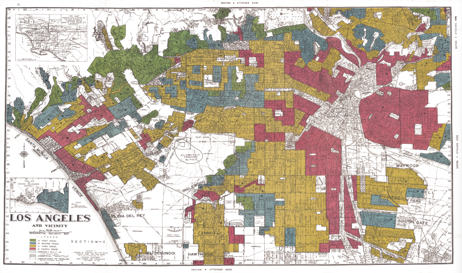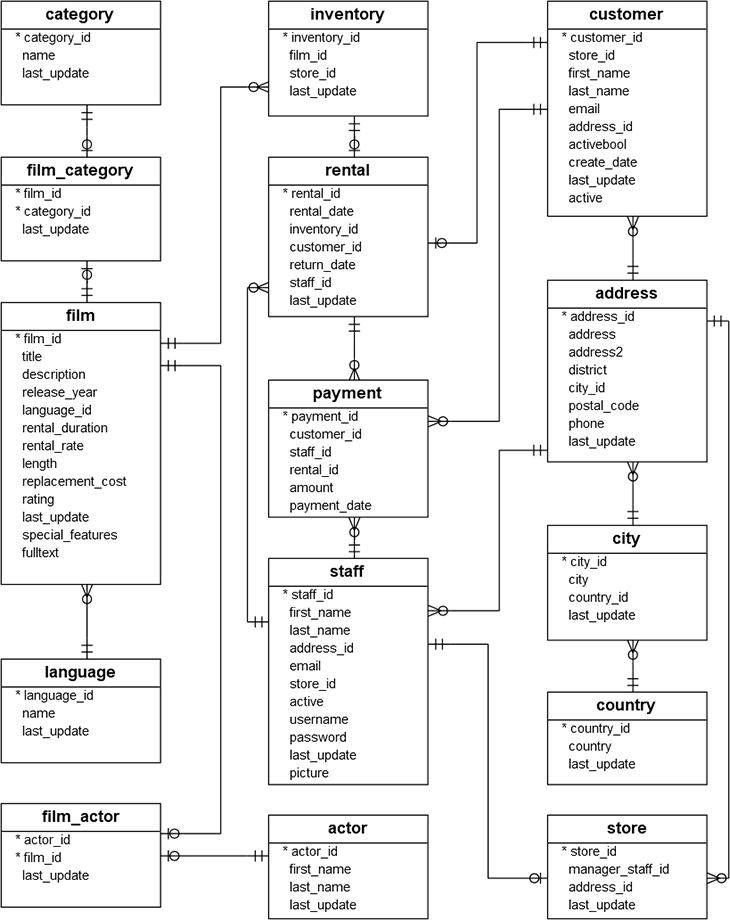GIS as a research method
Talk overview
1. What is spatial data
Difference to “normal” data
Spatial data formats
Representation
2. What is a GIS
Data to wisdom
GI systems
3. GIS as a research method
How to lie with maps (and data)
Point patterns
Autocorrelation
Spatial modelling
Networks
Earth observation
Who am i
Associate Professor in Spatial Data Science and Visualization at CASA, UCL
Lead MSc modules in:
Research:
Big data for allocating funding
What is spatial data?
Spatial data is just like normal data except it has an extra “geometry column” often referred to as “geom”
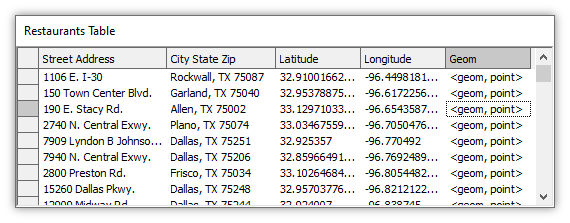
Spatial data
Spatial data is typically an empty shape or object:
- Grid cells / hexagons
- Polygons
- Lines
- Points (e.g. restaurants)
The magic happens when we join non spatial data to spatial data
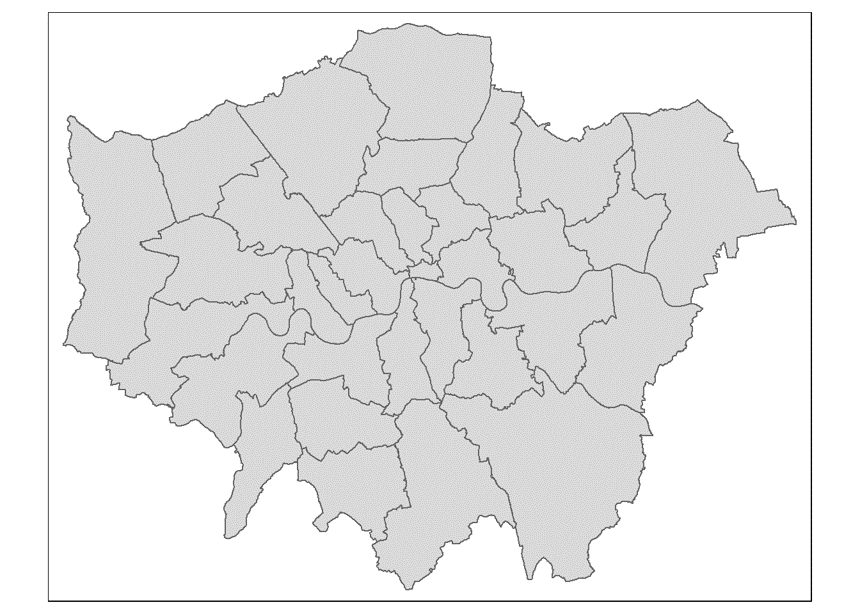

If someone gives you some (spatial) data, what is the first thing you might …
e.g. here is an excel file that has data on:
- BMI
- steps taken per day
- location
Plot it!
“While we teach our students the benefits of visualization, answering the specific hypothesis-driven questions did not require plotting the data. We found that very often, the students driven by specific hypotheses skipped this simple step towards a broader exploration of the data. In fact, overall, students without a specific hypothesis were almost five times more likely to discover the gorilla when analyzing this dataset”
 Yanai and Lercher (2020)
Yanai and Lercher (2020)
Types of spatial data: raster (‘grid’) Vs vector

Vector

Raster
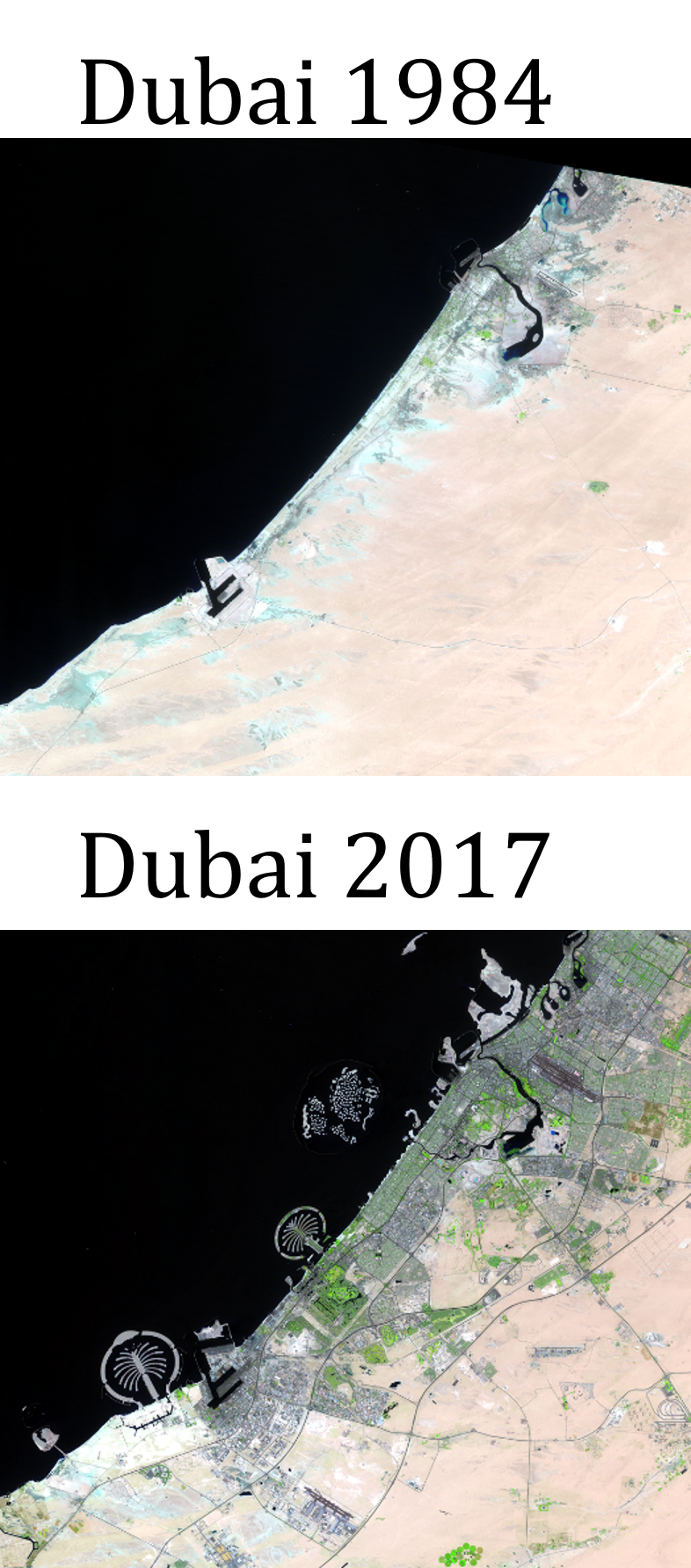
Features - vector data
Each column also has a data type
- Text
- Numeric?
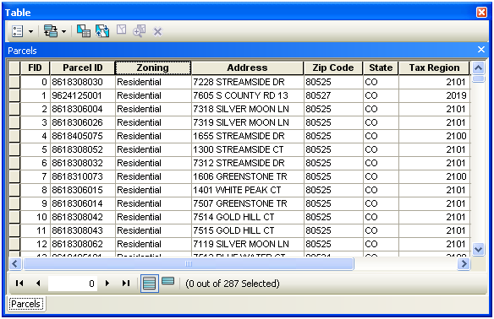
Representing the World
- The earth is a 3D sphere (well, almost). It’s wider than it is tall
- In order to locate a point on the surface of a sphere, we need a set of coordinates
- Coordinates will tell us how near to the top or bottom of the sphere we are, or how far around
- But where do we start?
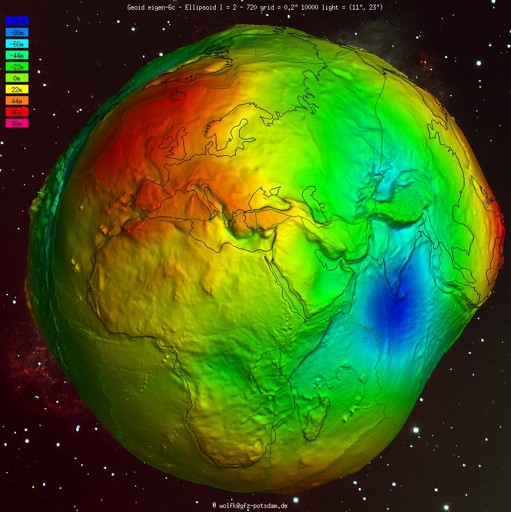
Representing the World
Geographic Coordinate Reference System
- treats the globe as if it was a sphere divided into 360 equal parts called degrees
Projected Coordinate Reference System
- flat, two-dimensional plane (through projecting a spheroid onto a 2D surface) giving it constant lengths, angles and areas

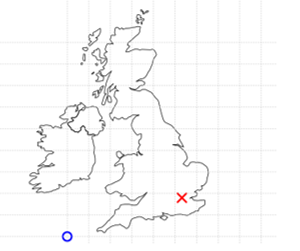
Representing the World
What is wrong with this map?
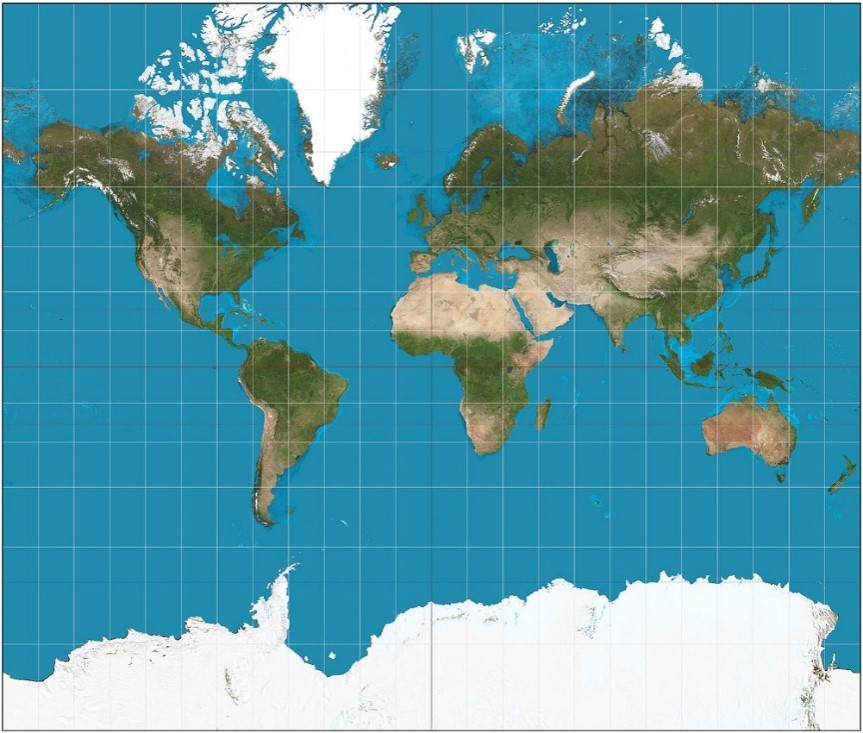
Can you make an accurate map
Representing the World
Mercator:
- European imperialist attitude
- Size = POWER, ethnic bias
- Are you a sailor?
Gall-Peters projection:
- Right size of countries
South UP?
- Top = important
- First known map 1154 Arab geographer Muhammad al-Idrisi

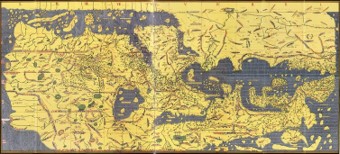

What is a GIS
We need to separate Geographic Information / Spatial Data SCIENCE from the tools we use to carry it out:
GI / SD Science is facilitated by the information systems (technologies – hardware, software + human interaction) we use to:
- Store (input)
- Manipulate / Process
- Distribute
- Analyse
- Retrieve (output)
- Data / Information
We do GI Science on the GI Systems
Data vs information

The Canada GIS
Developed by Roger Tomlinson at UCL in 1970s
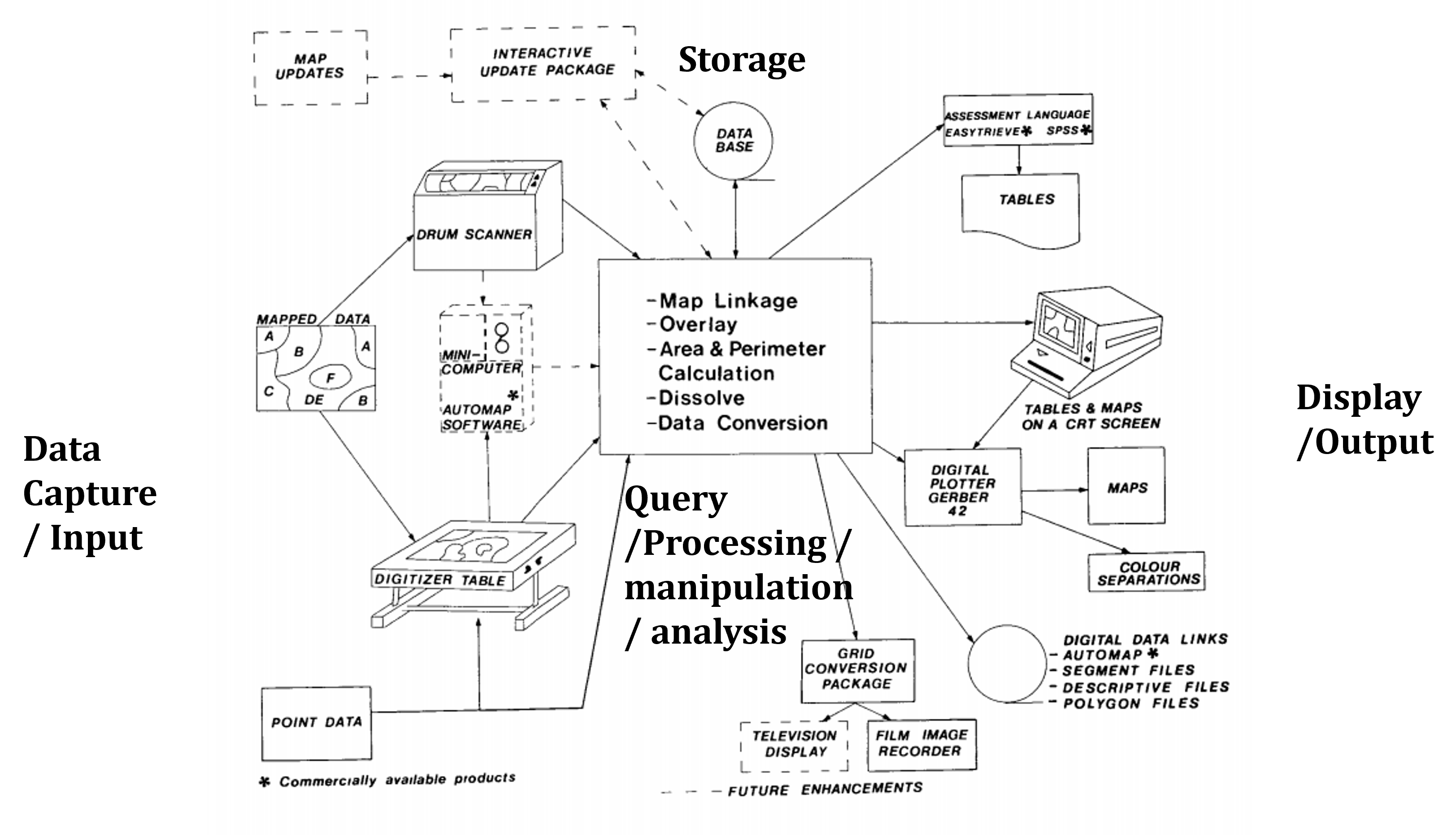
ESRI
From 1982, ESRI cornered the GIS market in terms of data storage, tools for Query /Processing / Manipulation / Analysis and Display / Visualisation
The Graphical User Interface – GUI – allowed non-specialists to carry out GI Science for the first time
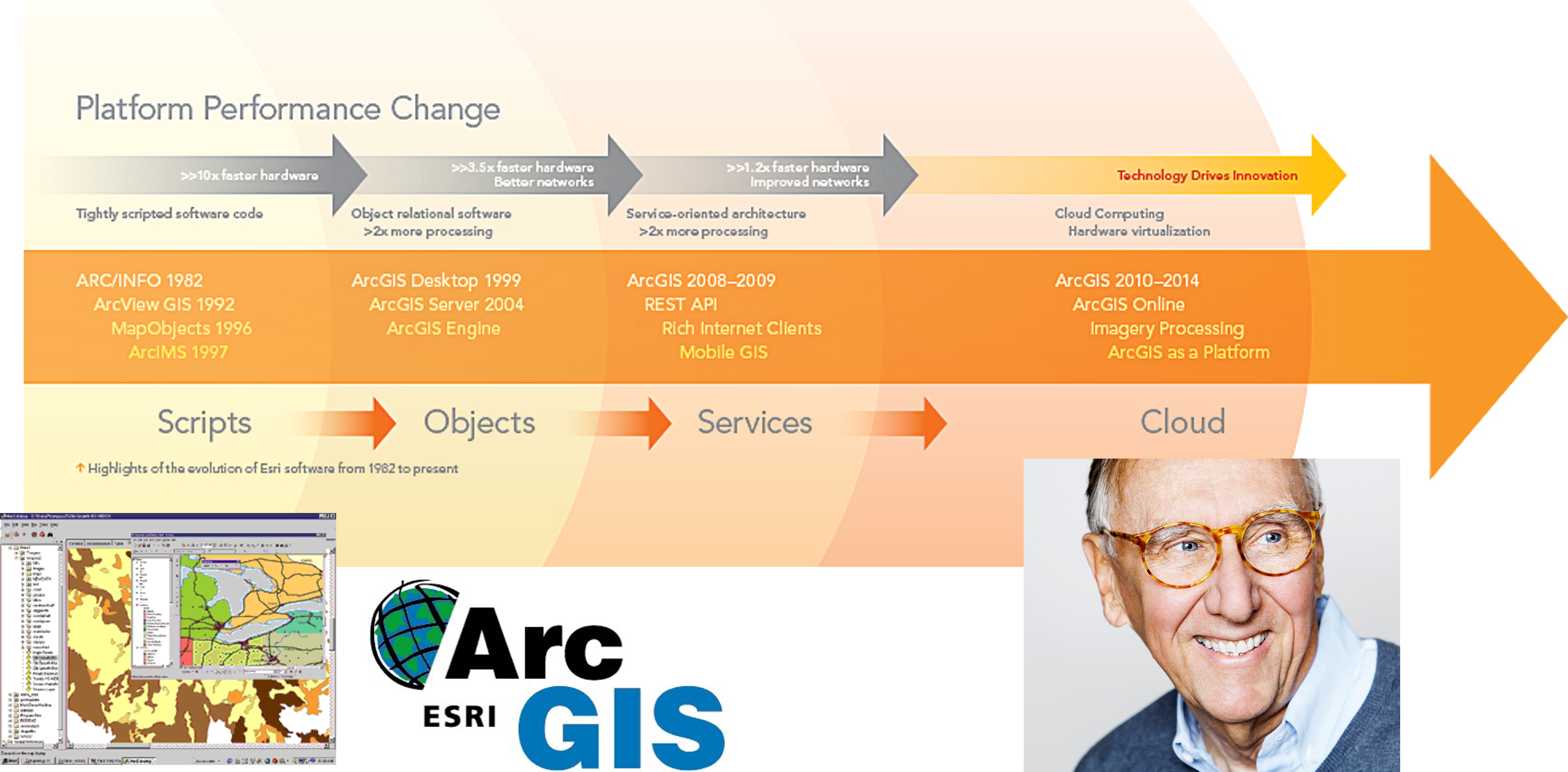
QGIS (Quantum GIS)
- Under development since 2002
- Free & Open Source – everything is on github!
- Probably best GUI GIS aside from Arc
- Connects to PostGIS database very effectively
- Slick maps with nice default features
- Large library of plugins for analysis
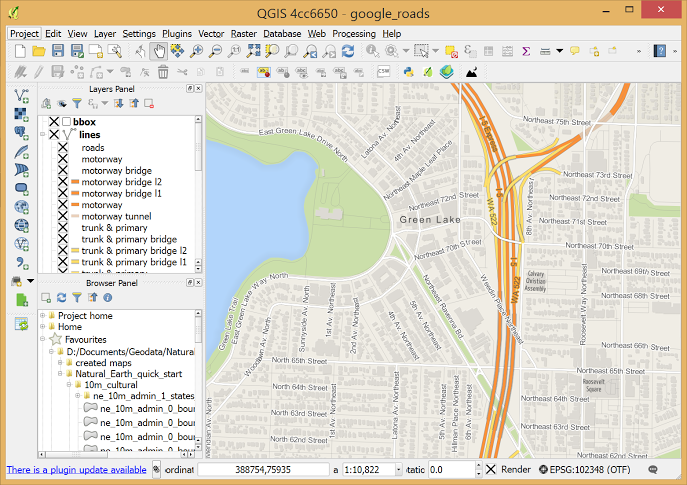
Programming + GIS
“Everyone does need to learn to code. It is no longer sufficient for a GI Scientists to just work with a standard GIS interface: menus, buttons and black boxes. ” Brunsdon and Comber (2020)
Comparison of 4 GWR approaches all produced the same result except the method in ArcGIS from ESRI who didn’t reveal the code.
R + Pthyon
Data management/ storage facilitated through connection to a range of file formats (almost any you can think of)
Plus a huge host of software packages for reading, writing and converting data held within these files into a format R can handle
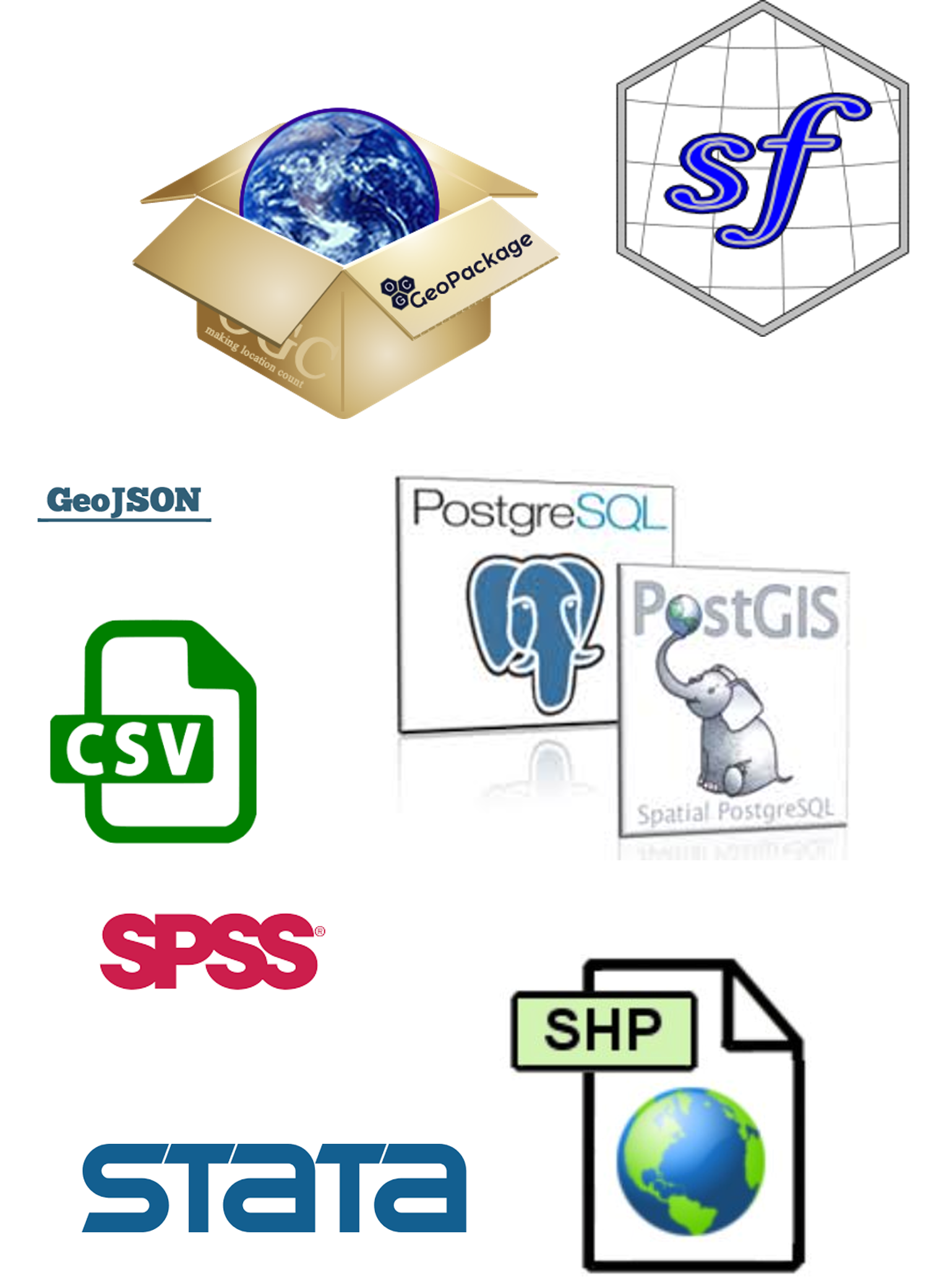
R + Pthyon
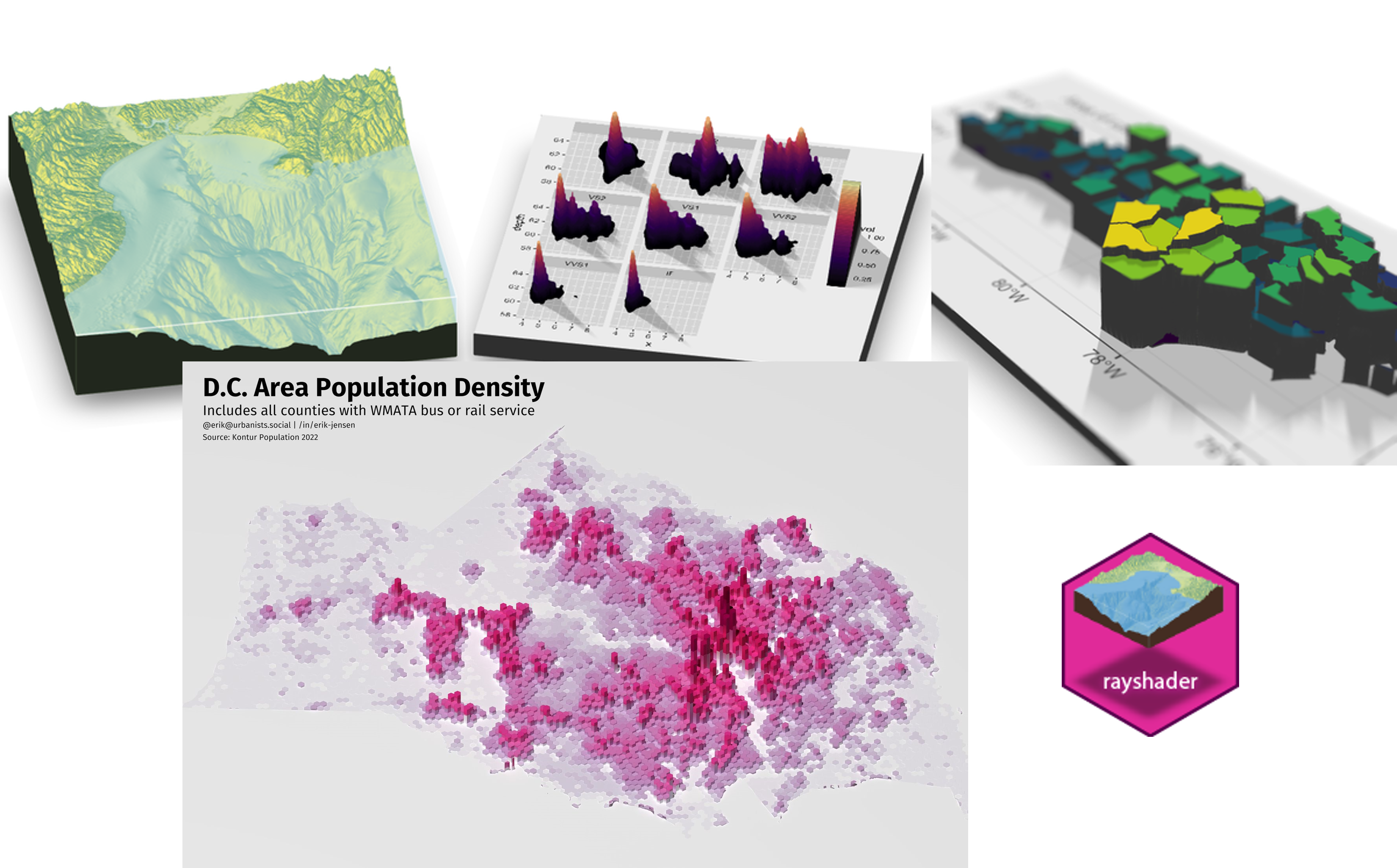
How to lie/ manipulate maps and outcomes
What is wrong with this?
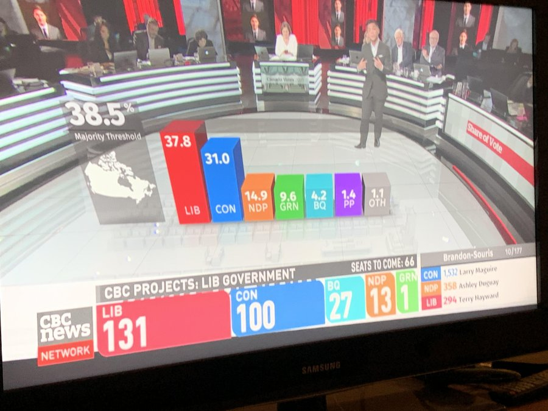
What is wrong with this?
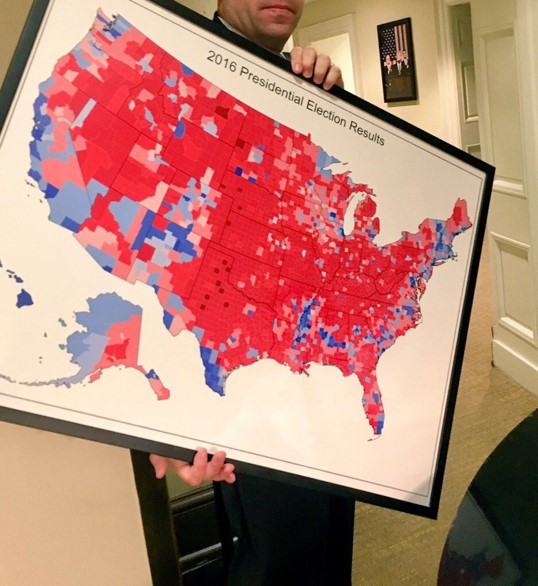
Issues
- Polygon size does not equal population
- Did all the people in each county vote for 1 party? NO.
Electoral college
- Each state gets three votes
- Remaining divided by population
- BONUS to smaller states
- 1 vote in Wyoming = 193,000 people
- 1 vote in California = over 700,000 people
Democrats got more votes, but lost
A people based map?
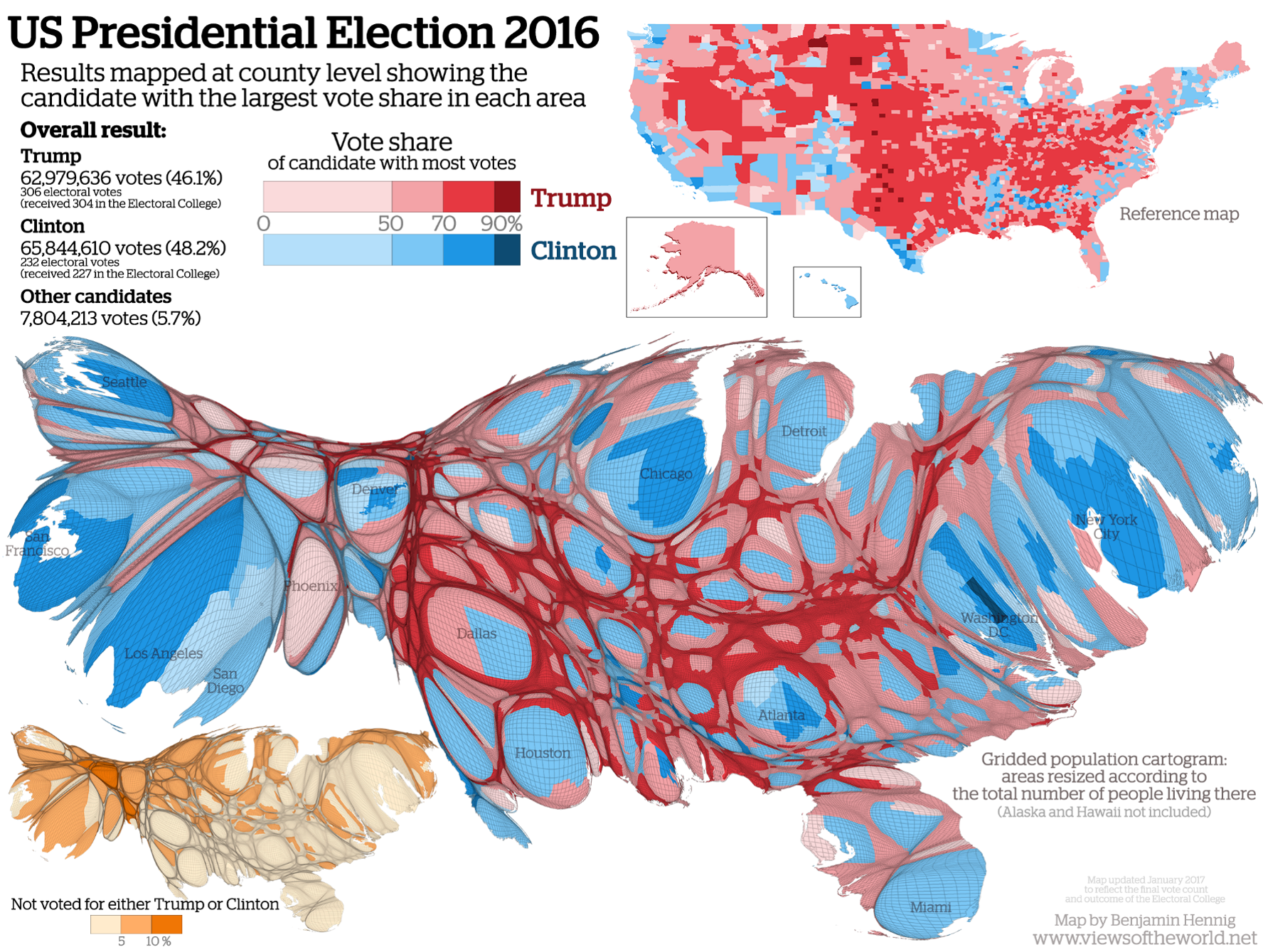
Who has made our boundary data?
Who has made manipulated our boundary data?
Who has made our boundary data?
Redlining
Who has made our boundary data?
Gerrymandering

“Redistricting is democracy at work” - Tom Hofeller


Urban systems science
Urban systems science
Urban Systems: Cities [or functions within cities] that can be considered linked together [there is a relationship between them]
+
Urban systems science
Urban Systems: Cities [or functions within cities] that can be considered linked together [there is a relationship between them]
+
Urban Science: Urban issues and problems
Urban systems science
Urban Systems: Cities [or functions within cities] that can be considered linked together [there is a relationship between them]
+
Urban Science: Urban issues and problems
=
Smart Cities: networks and services are made more efficient with the use of digital solutions for the benefit of its inhabitants and business.
Source: Smart Cities, European Comission
How smart are cities?
GIS applications
GIS can be applied to any field as long as there is some spatial data:
Health
Agriculture
Sustainability
Forestry…
Participatory GIS
Monitoring (social, economic, resource) changes
Environmental management / environmental impact assessments
- e.g. wind turbine?
Vague concepts?
What is a forest? Conceptual vagueness of geographic concepts. Bennett(2001)
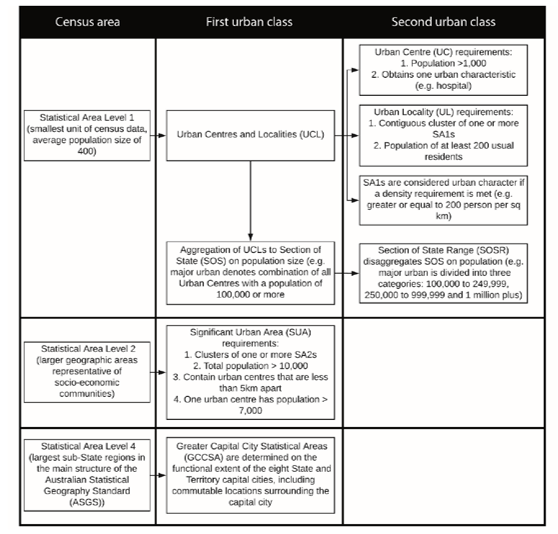

Problematic
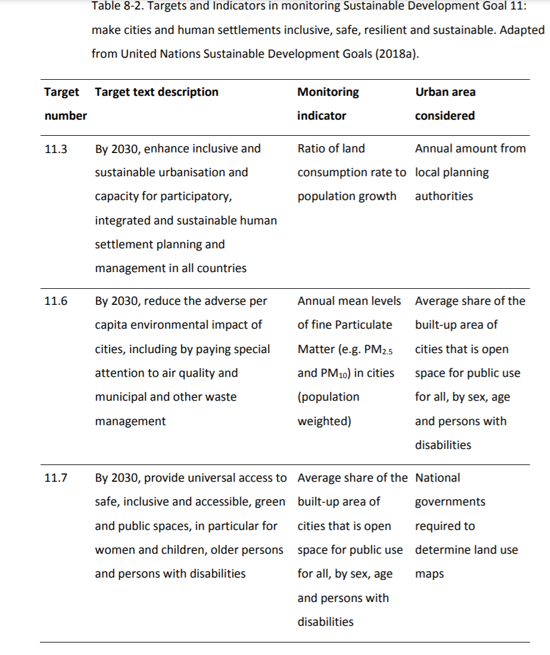
GIS methods let us answer the question “where” is my phenomona occuring and is it random or related to another variable
Point / continuous data
Questions we can ask / set
Points
Are these points distributed in a random way or is there some sort of pattern (uniform or clustered)?
We should expect randomness but randomness conforms to known probability distributions
Spatially continuous observations (e.g. values of polygons)
How (dis)similar are our values assigned to geographic units across geographic space
What patterns show
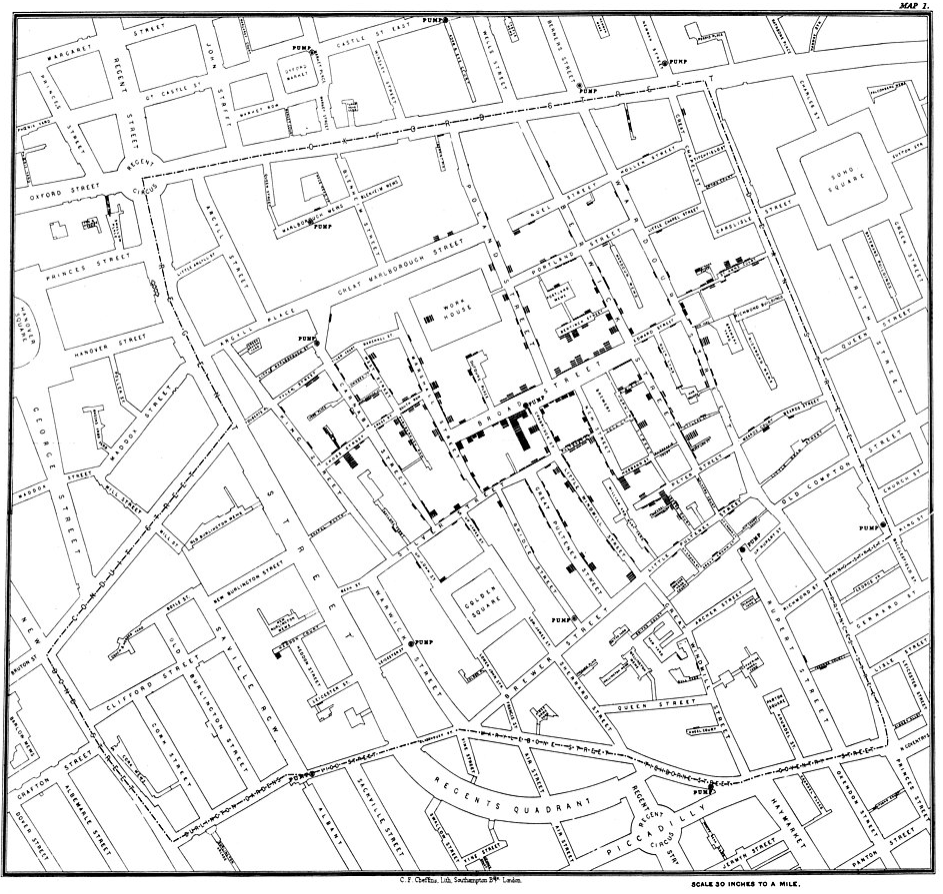
Something in the water: the mythology of Snow’s map of cholera. Source:Kenneth Field
Spatial Epidemiology: Lung Cancer

- Similar methods that we will use today - incidences of lung cancer relative to the physical envrionment - are they clustered and where?…leads to why
- are the locations of lung cancer similar?
- Does the incinerator have any influence ?
Spatial Epidemiology: Mortality
- Similar values might suggest there is something more going on
- Some sort of spatial influence
- Note the difference between spatially continuous and point data

Quantifying Spatial Patterns
What is fixed?
Point Pattern Analysis
- Properties are fixed (e.g. binary - present or not)
- Discrete objects - present or not, binary, yes or no.
- Examples: fly tipping, stop and search, blue plaques, pharmacies
Properties fixed, but space (location - x,y) can vary
Spatial Autocorrelation
- Space (e.g. the location of the spatial units - wards, boroughs etc) is fixed
- The values of the spatial units vary
- Where the values are similar we say they exhibit Spatial Autocorrelation
Space is fixed, but properties (values) can vary
Examples
Question: Are the points clustered or are they random?
If we identify clusters what are the socio-economic characteristics ?
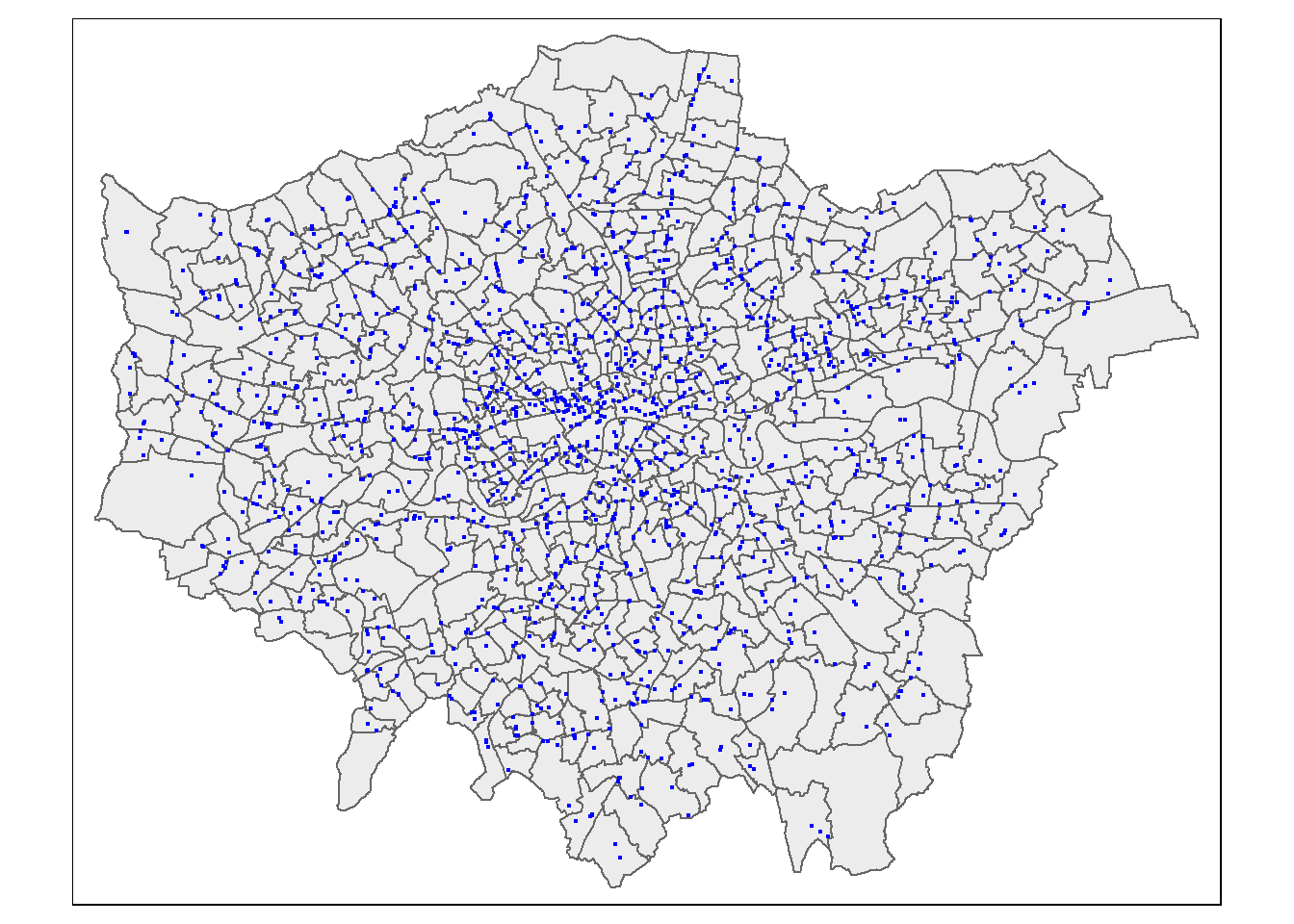
Examples
- Question: Are the values similar between certain wards?
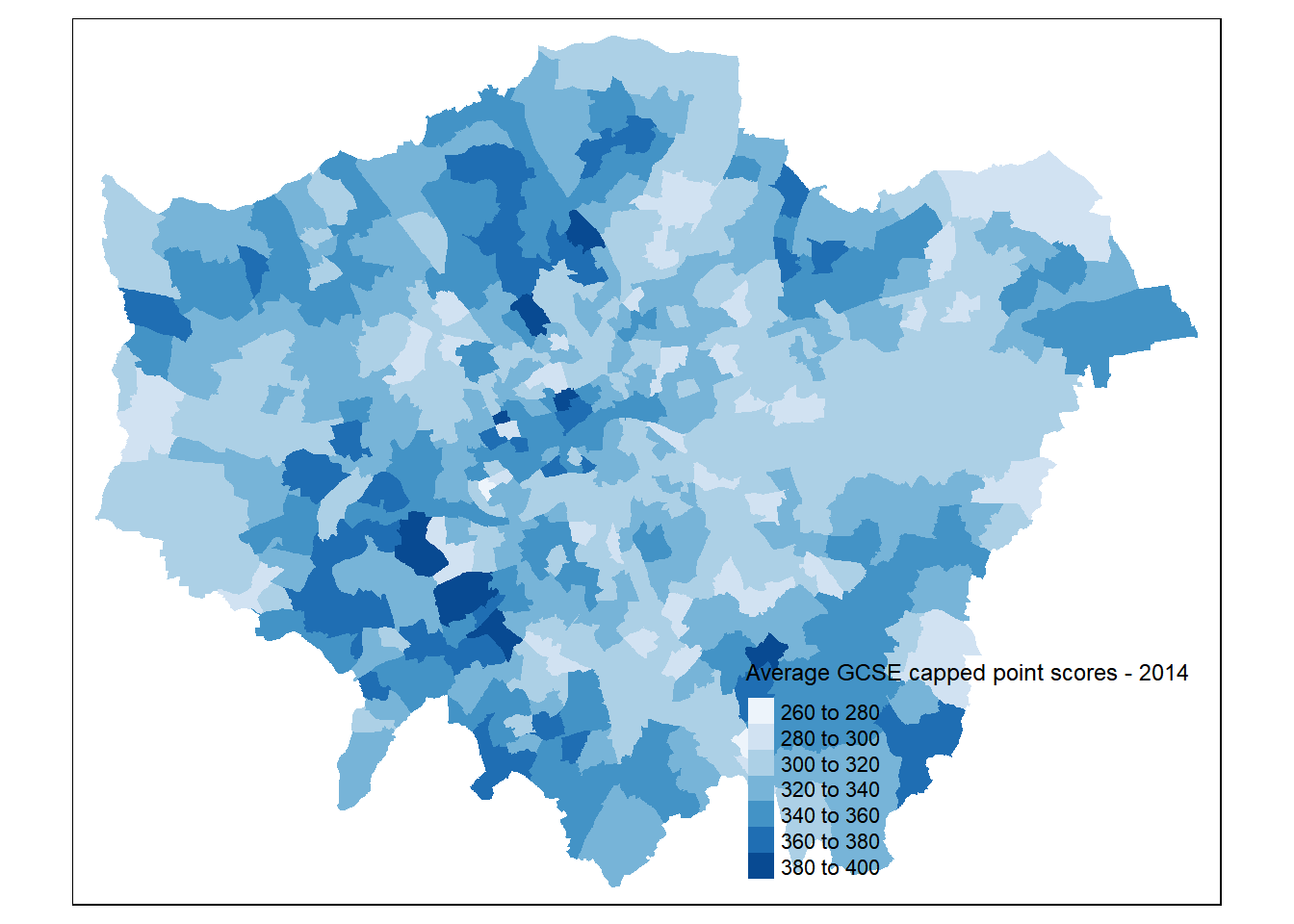
Spatial modelling
What are the factors that might lead to variation in Average GCSE point scores across the city?

Spatial modelling
What are the factors that might lead to variation in Average GCSE point scores across the city?
Dependent variable labelled y
Residuals are the dots not on line
\(y_i = \beta_0 + \beta_1x_i + \epsilon_i\)
\(\beta_0\) is the intercept (the value of \(y\) when \(x = 0\) - somewhere around 370 on the graph above);
\(\beta_1\) is sometimes referred to as the ‘slope’ parameter and is simply the change in the value of \(y\) for a 1 unit change in the value of \(x\) (the slope of the blue line) - around -40.
\(\epsilon_i\) is a random error term sums 0 - add all of the vertical differences between the blue line and all of the residuals
Spatial regression
Here we haven’t accounted for the influence of a neighbour…
In our model the residuals (observed-predicted) should show no pattern (or autocorrleation)…in other words they should be random!
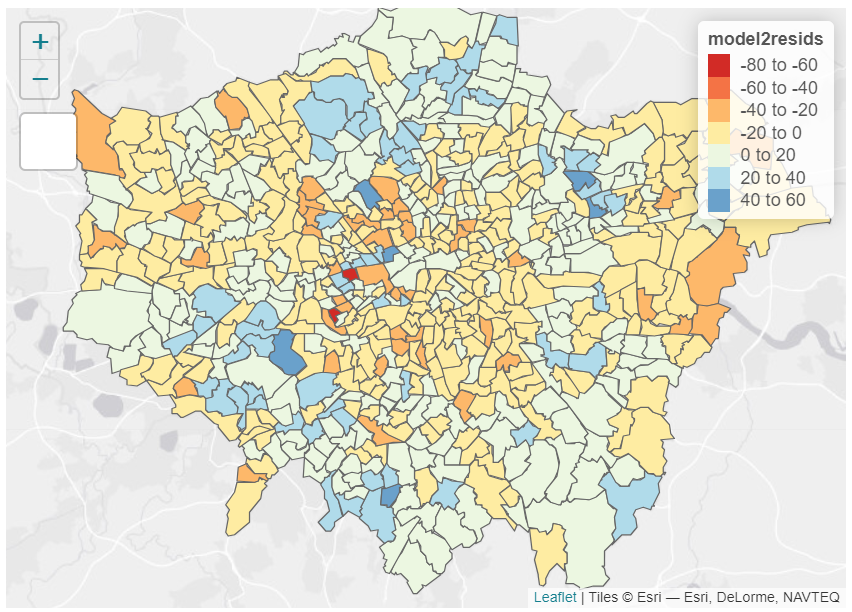
Spatial regression
At this point we have several options…
Global - single regression models
lag model - we can include the value of neighboring GCSE values in the model
error model - we treat the errors as a nuisance but we must account for them.
Local model
Geographically weighted regression - we do lots of local regression models and get coefficients that vary over the study area.
Machine Learning versions = geographically weighted random forests…
Networks / location allocation
You are in charge of a supermarket chain and you want to open a new store
You work for a delivery company and want to locate a warehouse
In the event of an emergency call, where is the nearest fire station / ambulance / police car?
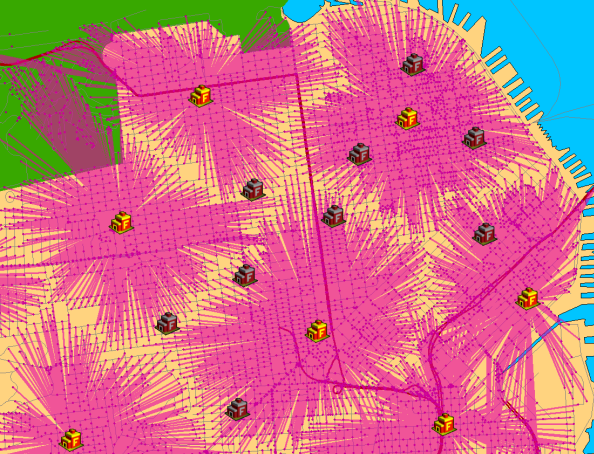
Networks / location allocation
Inputs:
- Street network (info on roads, speeds, turn restrictions)
- Open Street Map (free, Volunteered Geographic Information data)
- Ordnance Survey Master Map (UK national mapping agency)
- Demand points
- Often where people live (e.g. houses or census data)
- Facilities
- The resource (e.g. fire station, hospital)
Solver type…
What are you solving for?
Minimize Impedance: locate warehouses, because it can reduce the overall transportation costs of delivering goods to outlets
Maximize Coverage: fire stations - must arrive to demand point within response time
Maximize Capacitated Coverage: hospitals - serve demand without going over capacity
Great…however…
food deserts’ where people are likely to pay a higher cost for their weekly food shopping and have to shop in more expensive small convenience stores with a limited stock of good value fresh products.

The E-food Desert Index (EFDI) is a composite index which measures accessibility to groceries. Source:Trust for London
More poweful analysis
Instead of just using the network we can now combine public transport, elevation, use timetables and set parameters such as maximum waiting time using R5R

R5R example. Source:Duncan Smith
Cost distance analysis
Not all countries (e.g. developing countries) will have data on transport, networks and facilities.
Question: The World Bank wanted to determine how many people in rural Tanzania had access to a water point within 30 minutes.
Data:
- Landcover from Global Human Settlement
- Water points from World Bank
- Friction surface from Malaria Atlas (the cost to travel across the cell)
- 100m population data from World Pop
- Tanzania outline from GADM
Cost distance analysis
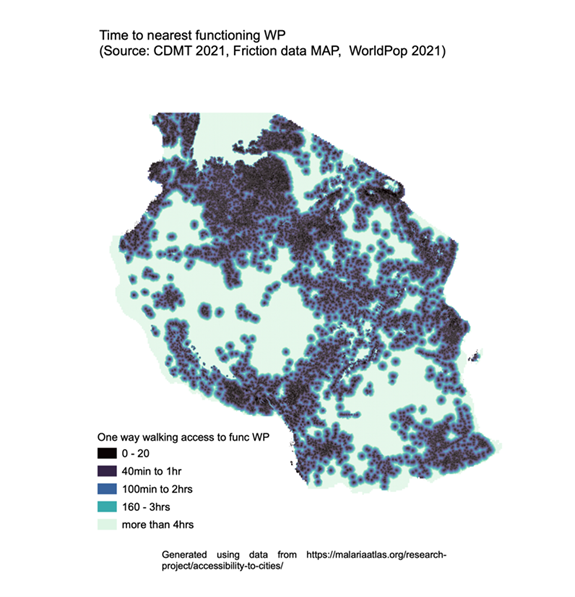
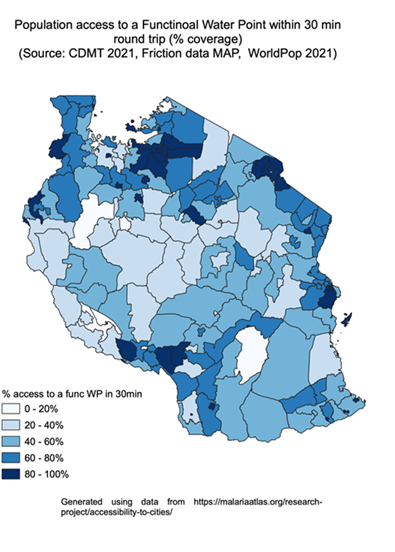
Earth Observation 1
Leonardo Brito became chief of police at the Police Specialized in Crimes Against the Environment (DEMA) in Brazil’s Amapá stated, he noticed that the department hardly ever investigated environmental crimes
2 employees, two vehicles, a boat and a drone, which collects only 20 minutes of footage at a time, to patrol an area of forest the size of Nepal.

Earth Observation 1
Brito said that since they starting using the app, Amapá’s environmental police have been able to detect 5,000 areas of deforestation in the state, both legal and illegal. He adds that every day he sees new locations to add to the ever-growing list.
Trying to clear small patches to avoid detection!
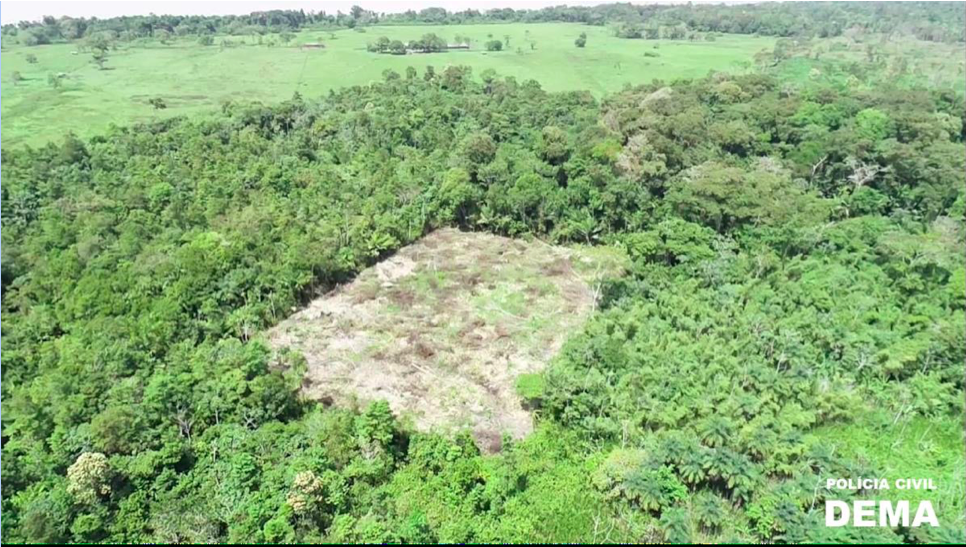
Earth Observation 2
Fremantle Woolstore, Western Australia



An example….UHI
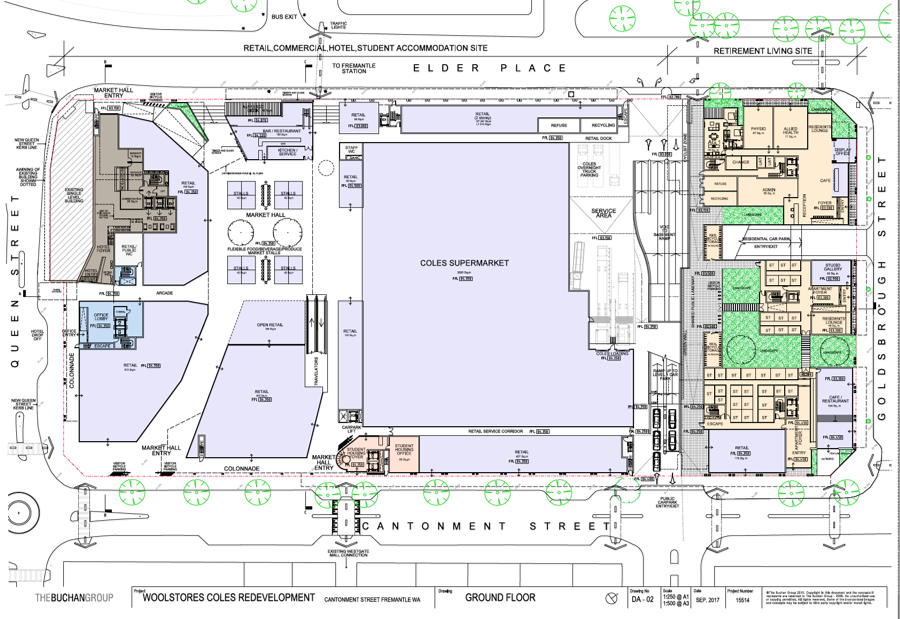
Data

Models

Scenarios
Ran 4 scenarios:
- Original (existing) development (from satellite imagery)
- Proposed redevelopment as in the plan
- Proposed redevelopment removing trees
- Proposed redevelopment with trees covering the hottest pixels

Policy
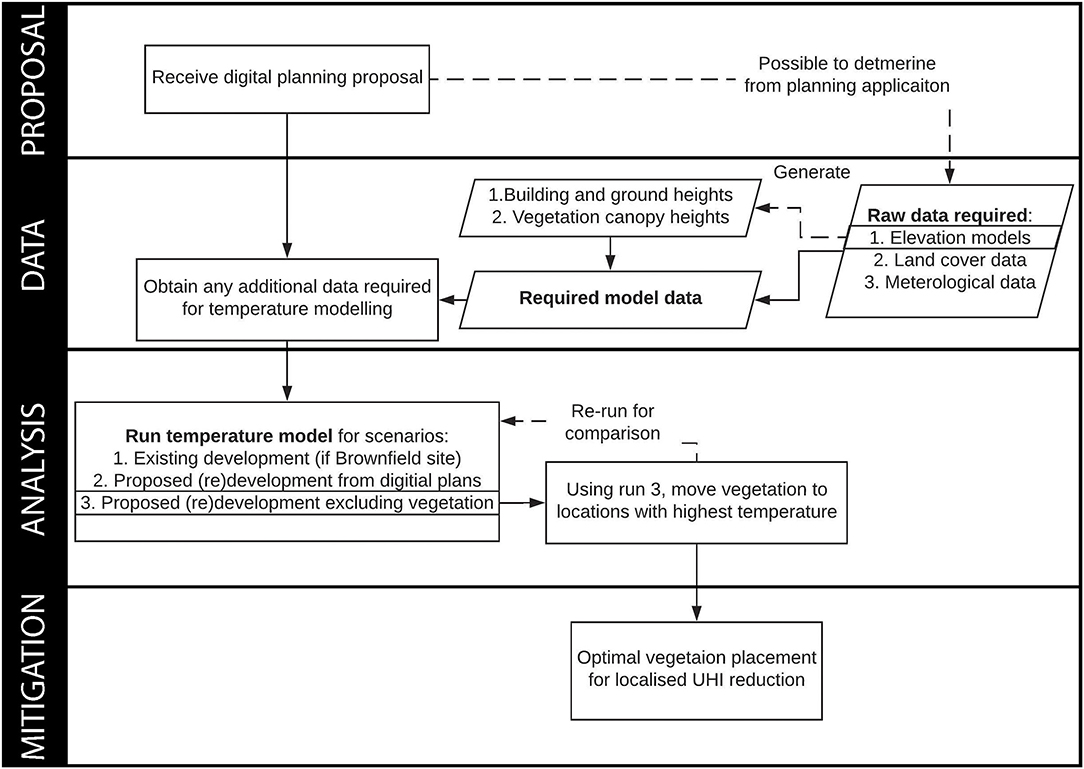
The future: Big Data
Big data
Big geospatial data include datasets that are too large to be processed using traditional GIS tools
Source: GIS Harvard
Why are they large?
Raster
Landsat satellite data: 400 scenes of Earth a day, revising each location every 16 days
- Each scene is about 1GB
- We’d used Google Earth Engine - not considered here
Vector
New York City Taxi and Limousine Commission (TLC) all records from Yellow and Green Cabs
- 150GB, 1.2 billion records
Open Street Map
- 1764.5GB when uncompressed
What can we do about it?
Parquet files
We are moving from row based storage to column based
About 50x faster than a .csv
It groups our data.
For example a row group size of 2, puts rows all the data from 1 and 2 next to each other then we have 3! = GROUPS or PARTITION
If we have large data this means we can skip groups we don’t need

Concepts
- You may come across Arrow - this is an in-memory format, Parquet is a storage format
In the R for Data Science book a 9BG
.csvis queried in- 11 seconds for standard code
- 0.063 seconds using a parquet file! 100x faster
We can go faster!

DuckDB
Database management system
Columnar data
No installation
Convert our Parquet file to DuckDB and back again!
Regarding performance, parquet is 717 times faster than the same query on a csv file, and duckdb is 2808 times faster.
Source: Christophe Nicault
Notes
All (parquet and DuckDB) make sure of
dplyr!select(),filter(),groupby()= direct integration with RCurrently the support for spatial data is very limited
sfarrow - can load and query the data but can’t do any analysis!
Postgres

Postgres = object-relational database
PostgreSQL has a PostGIS extention
This allows the “geometry” column and spatial quieres
Making random points in polygons
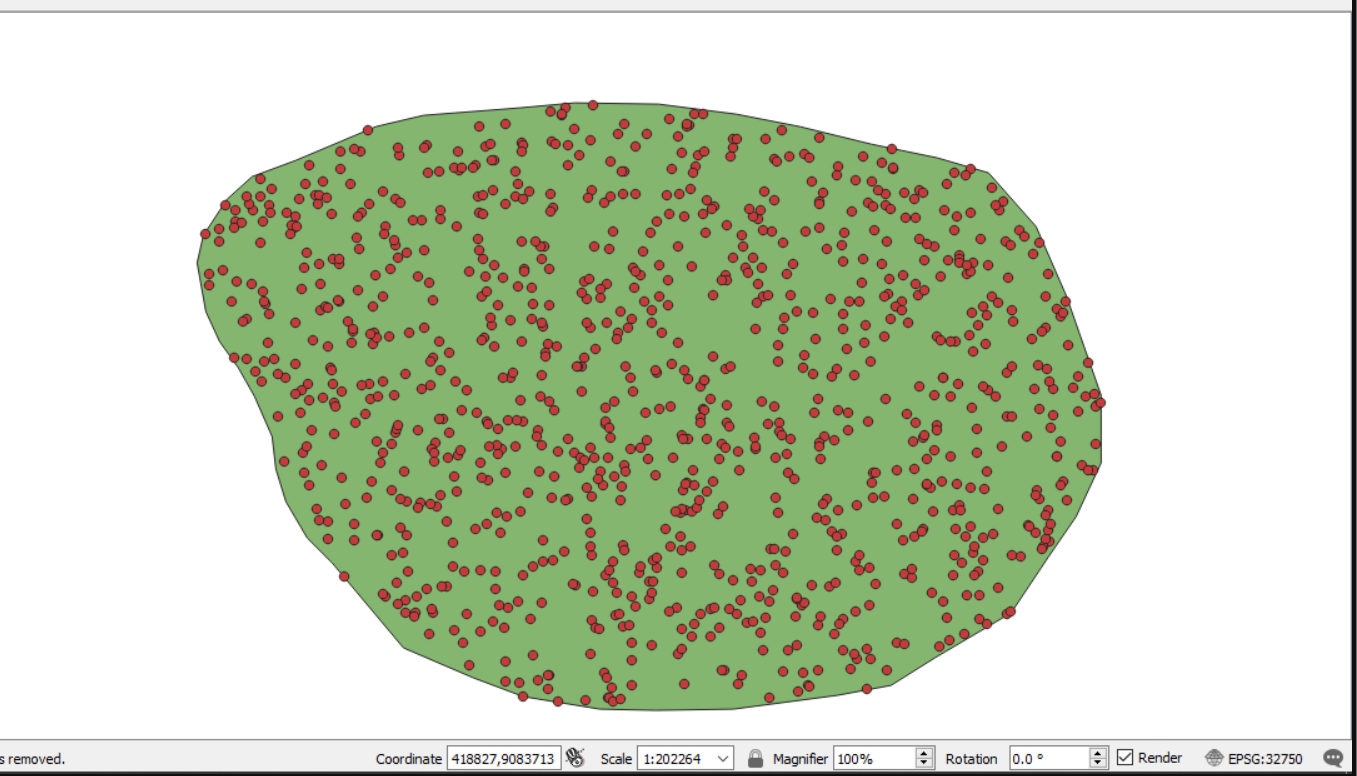
5 million random points
- QGIS = 226 seconds
- PostGIS = 18 seconds
PostGIS

Starting
Despite all these tools we must start with the basics.
Often this is in Quantum GIS (free) or ArcMap($)

Conclusion
It is essential to use data to inform decisions…BUT we must develop a critical awareness of:
- How the data has been created
- How the boundary data has been created
- What the agenda was for collecting the data
Almost any data can be spatial
We must recognize that:
- Data is a snapshot / sample of the population
- Analysis attempts to model the world - it is never perfect.
Scientists must have a say in the future of cities, McPhearson 2016

GIS as a research method • Andy MacLachlan
